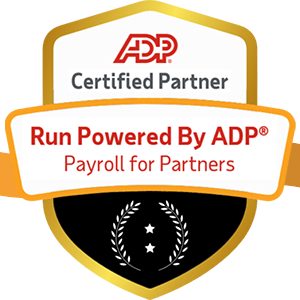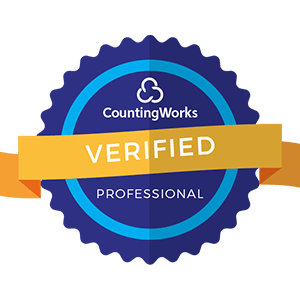
In today's rapidly evolving world, one thing is constant: change. From economic instability to technological disruptions to global health crises, we face an endless barrage of uncertainties in both our personal and professional lives. While change can be daunting and scary, those who are able to cultivate resilience and adaptability are best equipped not only to weather these storms, but to emerge stronger on the other side. Developing these key traits has become an essential survival skill in the modern workplace.
As an HR or business leader, building a resilient, adaptable workforce should be top of mind. Resilient employees maintain motivation, productivity and wellbeing through challenges. Adaptable employees are quick to learn new skills, take on new roles, and adjust to shifting strategies and priorities. Cultivating these qualities across your organization will foster a culture that is nimble, innovative, and ready for anything.
So how can you empower yourself and your workforce to become more resilient and adaptable? Here are some key strategies, backed by research:

Psychologists have found that our mindset towards adversity has a huge impact on our ability to overcome it. Resilient people view obstacles not as threats, but as opportunities to stretch beyond their comfort zone and expand their abilities. When we approach uncertainty with curiosity rather than fear, we open ourselves up to new possibilities.
As a leader, you can help shift your team's perspective by acknowledging challenges while expressing confidence in their ability to rise to the occasion. Frame changes as chances to innovate, learn and grow. Celebrate efforts to try new things, even if the outcome is imperfect. Regularly share examples of how the organization and individuals within it successfully adapted in the past.
When faced with ambiguity, train yourself and your team to ask: What can we learn from this situation? How can this make us better/stronger/smarter? What new doors might this open? This growth-oriented mindset is a cornerstone of resilience.
Uncertainty triggers anxiety because it makes us feel powerless. One of the most effective ways to combat this is to focus on what is within your sphere of influence.
You can't control a global pandemic, market volatility, or your company's latest pivot. But you CAN control your own response - your attitude, your effort, your choices and actions. Concentrating on these variables restores a sense of agency and self-efficacy, which is empowering.
Encourage employees to pour their energy into their circle of control. This could include:
By focusing on what they CAN do, employees build competence and confidence. They discover they are far more capable of navigating change than they realized. This sense of self-assurance is the heart of resilience and adaptability.
Resilience is often equated with "toughness" or the ability to power through difficult situations. But truly sustainable resilience requires rest, recovery and self-compassion. Just as elite athletes carefully balance intensive training with periods of renewal, we all need downtime to recharge after stressful sprints.
Chronic stress - which many experience during times of uncertainty - takes a toll on our minds and bodies. Left unchecked, it leads to burnout, illness, mental health issues, strained relationships and poor performance. To avoid these pitfalls, it's essential to prioritize employee wellness and work-life balance, especially when demands are high.
Encourage employees to:
As a leader, model this by taking care of yourself and vocalizing the importance of wellness. Institute policies and benefits that make self-care feasible, like flexible schedules, generous leave, comprehensive health insurance, and well-being initiatives and resources.
When people feel supported in nourishing their overall wellbeing, they are much more resilient. They have greater physical and emotional stamina. They gain perspective and release stress in healthy ways. Most importantly, they show up as the best version of themselves, both at work and at home.

Resilience and adaptability may begin with the individual, but they are sustained through community. We aren't meant to shoulder challenges alone. Having a strong support system to lean on in tough times provides essential stability, encouragement and assistance.
Employees with thriving relationships - both within and outside the workplace - are far better equipped to navigate uncertainty. They have trusted confidantes to process fears and frustrations with. They can brainstorm solutions collaboratively. They have folks to tap for help and resources. They feel seen, validated and lifted up by their team.
Leaders should make strengthening social connections a key part of their resilience-building strategy. To foster a supportive organizational culture:
By helping employees build a multifaceted support system, you give them a critical source of strength and resilience. When they face obstacles, they know they have a community to help them through. Knowing they aren't alone is incredibly empowering.
When the world is changing rapidly, adaptability is a core competency. The most adaptable people and organizations are those committed to continuous learning. They are curious and proactive about acquiring new knowledge and skills. This growth mindset equips them to evolve ahead of the curve.
To build a highly adaptable workforce, make learning an organizational priority and a core part of your culture. This starts with hiring lifelong learners and rewarding that quality. But it also requires providing ample resources and opportunities for employees to keep expanding their abilities.
Some ways to foster continuous learning:
The more employees grow and adapt, the more confident they will feel in their ability to handle change. Skills that once seemed daunting become exciting new tools in their professional repertoire. What's more, continuously upskilling your workforce ensures your organization has the abilities to tackle new challenges and pursue emerging opportunities. You cultivate the agility and innovation needed to thrive in an uncertain future.
People with a strong sense of purpose tend to be more resilient. When our work feels meaningful, we are intrinsically motivated to push through challenges. Having an answer to the question "Why am I doing this?" provides a North Star when the path forward is hazy.
Purpose fuels both perseverance and adaptability. It inspires us to keep learning and growing so we can have the biggest possible impact. It gives us a compelling reason to embrace change, as long as it serves our underlying mission.
To tap into this powerful driver of resilience, help employees connect their individual roles to the organization's deeper purpose. Regularly communicate and reiterate the company mission, vision and values. Explain how each team's work ladders up to those big-picture goals. Have managers discuss with their direct reports how their specific contributions make a meaningful difference.
Also give employees opportunities to do purpose-driven work personally resonant for them. This could involve stretch assignments aligned with their values, chances to contribute to their communities, and support in pursuing passion projects.
When employees feel their work matters, they will go the extra mile. They find reserves of energy and commitment they didn't know they possessed. They rally together to accomplish ambitious goals. Meaning gives them a compelling "why" that sustains them through uncertainty.
Resilient people are often described as optimistic - but it's important to distinguish realistic optimism from blind positivity. The former acknowledges the real challenges of a situation while maintaining confidence in our ability to navigate them. The latter denies problems and thus leaves us unprepared.
Realistic optimists don't pretend everything is perfect. But they do focus on what's going right and what they can influence. They see the potential upside in change. They trust in their own capabilities and their team's. They know that however hard things are now, they will get through it.
As a leader, you can model realistic optimism for your team. Be transparent about the issues you're facing as an organization. Don't sugarcoat, but do highlight bright spots, progress and reasons for confidence. Remind your team of their strengths and past triumphs. Celebrate wins, even small ones. Express your faith in their ability to rise to the occasion.
At the same time, make space for people to be honest about their struggles and concerns. Toxic positivity - which denies the validity of difficult emotions - actually erodes resilience. Let people know it's okay and normal to feel stressed, frustrated or uncertain sometimes. The goal isn't to never have those feelings, but to be able to work through them productively.
Adaptability requires getting comfortable with experimentation. When the world is changing fast, we have to be willing to try new things, even if we aren't totally sure they'll work. We have to venture beyond the safety of the status quo.
This can feel risky, especially for organizations used to extensive planning and predictability. But in an uncertain environment, overly rigid processes kneecap agility. We have to cultivate a culture that allows for intelligent risk-taking and sees "failure" as an inevitable part of innovation.
Encourage leaders and employees to approach new challenges with a spirit of experimentation. Frame initiatives as pilots, where the goal is as much to learn as to achieve a particular outcome. Use agile methodologies that allow for frequent iterations based on real-time feedback and results.
When things don't go as planned, do blameless post-mortems to extract lessons. Reward employees for creative thinking and proactive problem-solving, even if their ideas weren't perfect. Showcase examples of successful pivots and innovations that initially seemed risky.
Of course, this doesn't mean being reckless or making big bets without doing due diligence. But it does mean empowering people to test new ideas and solutions, as long as they're thoughtful about managing downside risk. It means making decisions based on the best information currently available while remaining open to adjusting course as you learn more.
Ultimately, navigating uncertainty requires a tolerance for ambiguity and imperfection. Waiting until we have foolproof plans can mean waiting forever. Building a culture of experimentation helps your organization keep moving forward even when the destination is unclear.
While we may not be able to predict the future perfectly, we can equip employees to prepare for multiple possible futures. Scenario planning and contingency mapping are powerful tools for navigating unpredictable situations.
In scenario planning, you imagine several potential ways things could unfold based on different variables. For each scenario, you think through the implications, challenges and opportunities. You then identify strategies that would position you for success across multiple eventualities.
With contingency mapping, you proactively devise if/then plans for different possible outcomes. You figure out your next steps and key decisions in advance, so you're ready to act quickly when triggering events occur.
Developing these skills helps employees feel less blindsided by change. It allows them to prepare mentally and practically for a range of possibilities. Knowing they have considered game plans in their back pocket makes the unknowns less daunting. Decision-making becomes faster and more self-assured.
To build these abilities in your workforce, train employees in scenario planning methodologies. Have teams map out contingencies for key projects and initiatives. Conduct simulations where employees roleplay responding to curveball situations, so they can practice thinking on their feet. Do premortems to anticipate potential stumbling blocks and brainstorm solutions proactively.
The goal isn't to cover every hypothetical, as that would be impossible. It's to help employees get comfortable considering a variety of ways things could play out and generating creative strategies for each. Over time, this starts to become second nature, an automatic part of how they approach their work. They get better and better at riding the waves of change.
In a fast-moving world, resilience and adaptability are as much about organizational agility as individual skills. No matter how resilient and adaptable your employees are, they will struggle to put those talents to use in overly rigid structures. To empower people to navigate nimbly, you need systems and processes that prioritize flexibility.
Build adaptability into your foundations by designing for change. Use modular architectures that allow components to be updated or reconfigured without disrupting the whole. Favor plug-and-play technology so you can swap tools in and out as needs evolve. Create cross-functional teams that can pivot quickly. Make data accessible so decisions can be made in real-time. Decentralize authority so frontline employees can act fast without layers of red tape.
Also look for ways to introduce more flexibility in the employee experience. Allow for remote and non-linear work where possible so people can adapt to the circumstance of their lives. Let employees craft roles that play to their strengths and learning goals. Provide a range of benefits that can be mixed and matched to individual needs. Rethink traditional hierarchy and career pathing to open more possibilities for advancement and mobility.
The more malleable your organization's "operating system," the better it can adapt to shifting realities. Employees can fluidly reconfigure and redirect their efforts as conditions change. They aren't constrained by conventions that may no longer serve them. Agility becomes a part of the culture, enabling perpetual evolution.

Even the most resilient people have moments when uncertainty feels overwhelming. When we're deep in the throes of upheaval, it can seem like it will last forever. One of the best things we can do for ourselves, and encourage in others, is to maintain perspective.
Remind yourself and your team that change is constant, and we have successfully adapted before. Reflect on past challenges you overcame, personally and organizationally. Reach out to mentors or colleagues with long tenures and ask them what they've learned about navigating transitions.
Also, remember to look for the bigger picture. Reground yourself in your larger sense of purpose. Reconnect to your core values and mission, which can act as a beacon in the fog. Find the humanity in the situation and prioritize empathy and compassion for yourself and others. Invest in relationships and community; we are all in this together.
When we zoom out and connect to something bigger than the crisis at hand, we realize that this too shall pass. We gain perspective that allows us to refocus on what matters most. We find stability at a deeper level that carries us through the surface churn.
Finally, make resilience and adaptability more than just survival tools - make them a point of pride. Recognize and celebrate the incredible ways your employees navigate stormy seas. Shout out the creative solutions they devise. Praise the grace and fortitude they show under pressure. Highlight how their efforts embody and advance the organization's values.
Share these stories far and wide. Make overcoming challenges with grit and ingenuity a core part of your employer brand. Use it to attract new talent that thrives in ambiguity. Celebrate how your team's resilience and adaptability make you stronger and move you forward.
The more you champion these skills, the more you will reinforce them in your culture. What gets recognized gets repeated. Employees will lean into the qualities you laud. Resilience and adaptability will become a source of individual and institutional pride.
Ultimately, resilience and adaptability are muscles. The more we use them, the stronger they get. Building these capabilities is not a one-and-done initiative, but an ongoing process - a continual reorientation towards embracing change as it comes.
By working these strategies into the fabric of your organization, you train that instinct in yourself and your employees. You help people discover reservoirs of strength and resourcefulness they didn't know they had. Your culture becomes one where people feel empowered to meet new challenges and secure in their ability to figure things out.


